I recently got my hands on an OWON HDS272S, a top-of-the-line 3-in-1 handheld oscilloscope/digital multimeter/arbitrary waveform generator in OWON’s HDS200 series. It competes directly against Hantek’s 2000 series’ 2D72 which I did a teardown of not too long ago. I did a detailed review of the HDS272S last week (the review video is linked below) and was very impressed by its overall performance, especially the fast update rate of the built-in oscilloscope. In this blog post, I will share with you some of the teardown pictures. A video of the teardown is also linked towards the end of the post.
The OWON HDS200 series has four models. The models with the “S” suffix also come with an arbitrary waveform generator builtin and the main difference between the 242 and the 272 series is the oscilloscope bandwidth. The HDS242(S) models support 40 MHz oscilloscope bandwidth whereas the bandwidth for the HDS272(S) models increased to 70 MHz. Other specifications are identical across the entire HDS200 series.
The OWON HDS200 series has better hardware specifications compared to the Hantek 2000 series. For instance, the OWON series incorporates a 20,000 counts true RMS DMM whereas the Hantek 200 series only offers a 4,000 counts DMM. OWON’s AWG utilizes a 14bit DAC whereas in the Hantek 2000 series a 12 bit DAC is used. The display used in OWON is also larger. It has a 3.5 inch LCD versus the 2.8 inch one found in the Hantek. Despite the size difference, the resolutions for these LCDs are the same, which are both at 320×240.
The OWON HDS272S has a rubberized case (sans the rubber holster found on the Hantek), which can be easily opened by removing the four mounting screws. If you just need to swap out the rechargeable 18650 lithium ion cells, you don’t have to remove the whole back cover. There is an access panel secured by a single screw.
The picture to the left below shows the inside of the OWON HDS272S and the picture to the right below is from the Hantek 2D72. From these pictures you can see that the general layout of these two oscilloscope are quite similar.
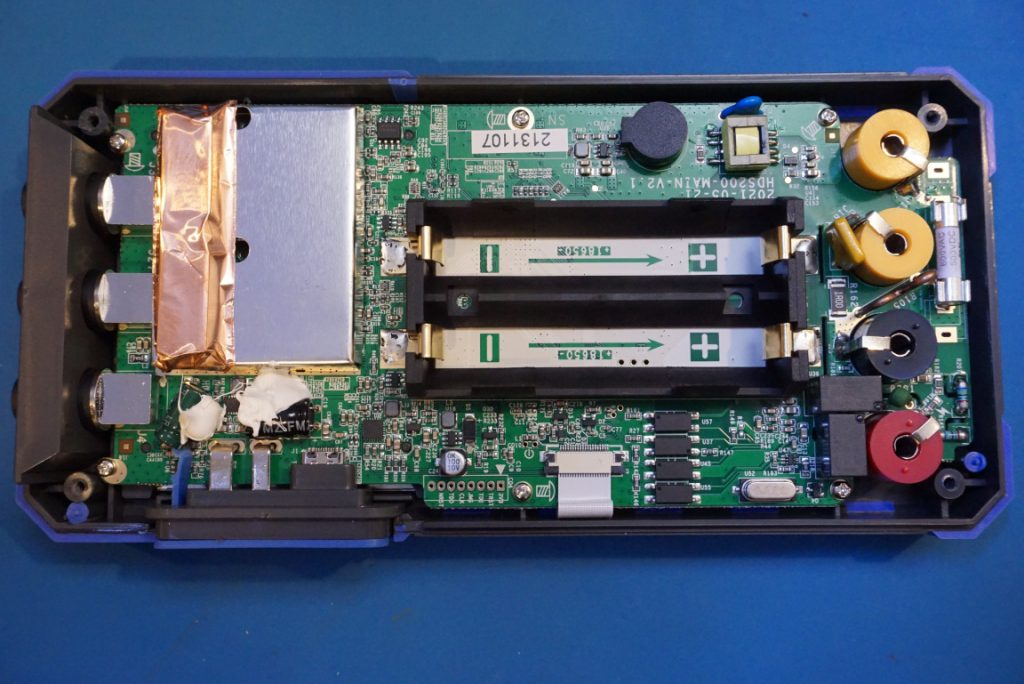
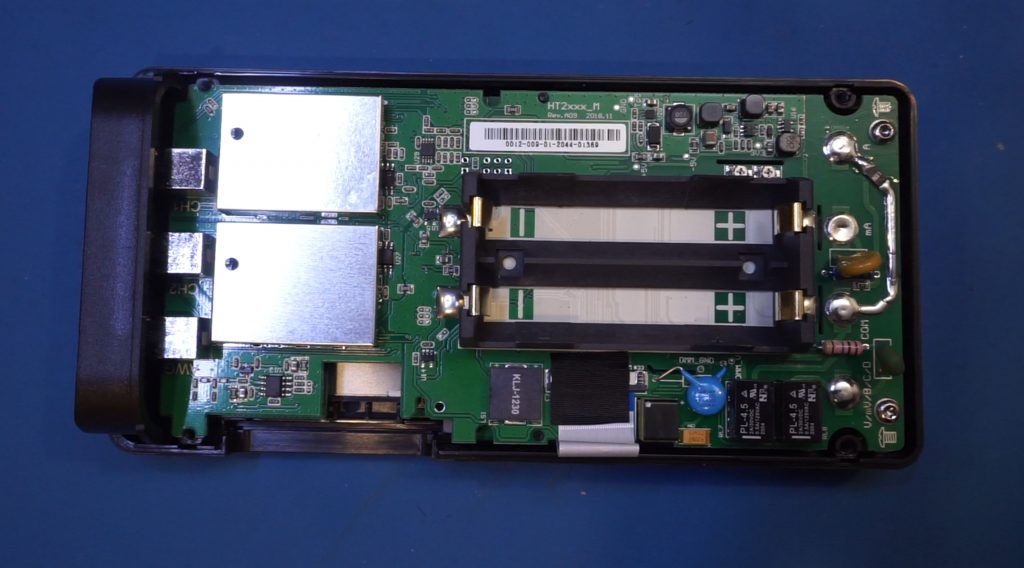
Below are a couple of pictures comparing the DMM input sections between the HDS272S and 2D72. Different input jack designs are used in these two devices. In the Hantek unit, the input jacks are soldered directly onto the PCB. I prefer OWON’s design better as the hollow jack design allows the input jack to accommodate banana plugs of slightly different lengths. Also the force from the insertion is not applied to the PCB directly, this improves the reliability of the solder joints.
Another thing you will notice is that a proper 10A fuse and a high current current shunt are used in the OWN HDS272S whereas in the Hantek 2D72 the 10A range is unfused. The DMM in OWON is CAT III rated whereas in the Hantek it is CAT II rated. Although by looking at the input section, besides a few more isolation slots on the OWON PCB there isn’t any protection MOVs besides a single PTC near the input.
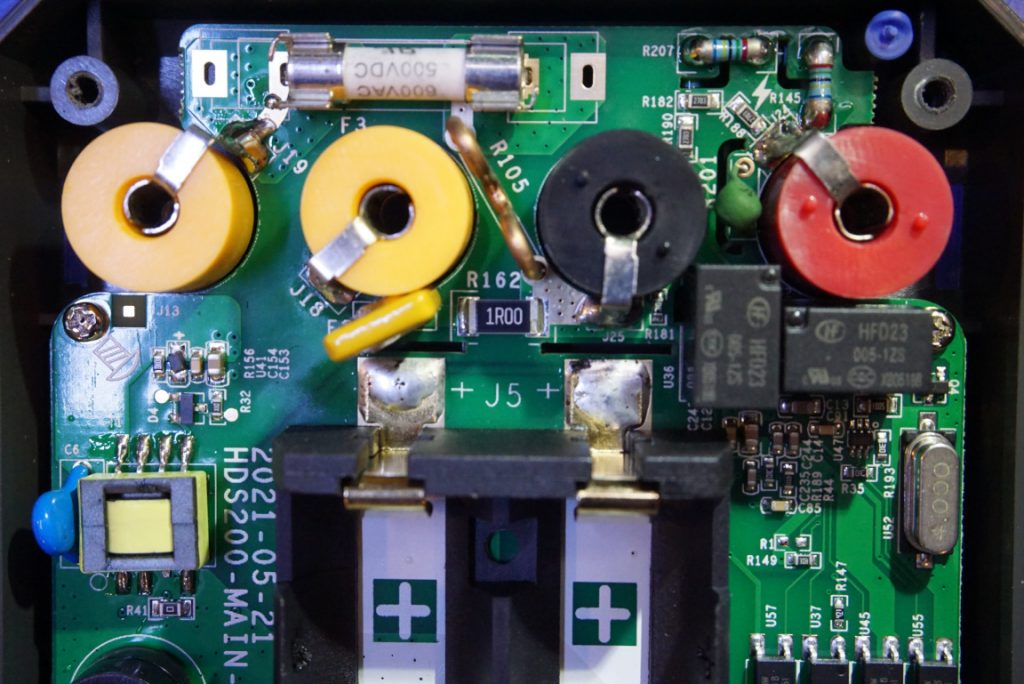
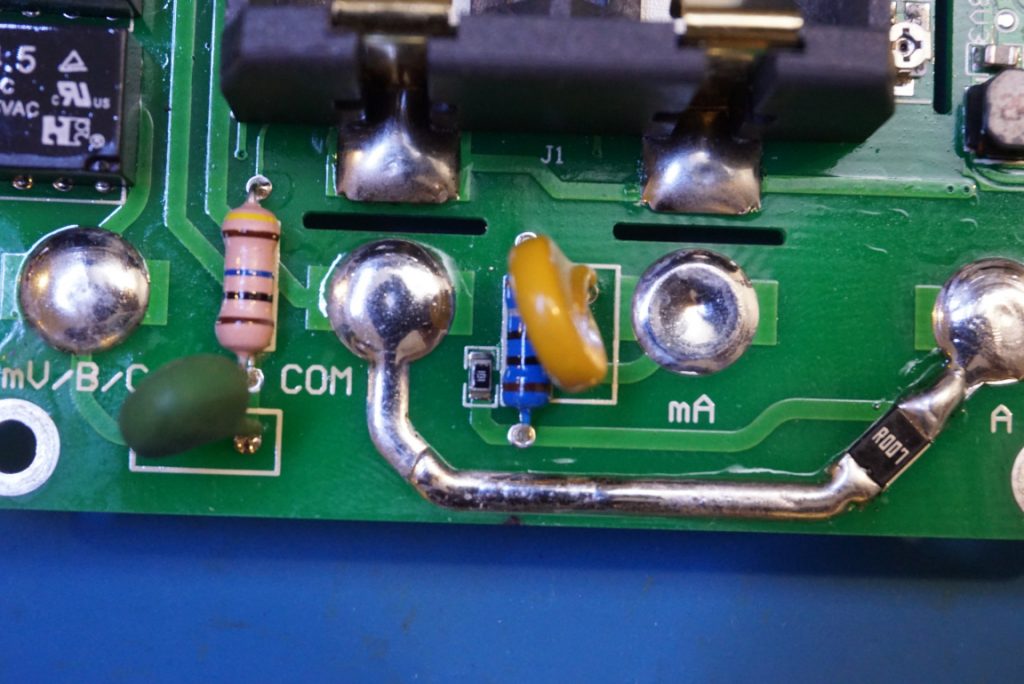
In the picture to the left below, you can see the shielded input sections for the oscilloscope and the picture to the right is a closeup of the area near the USB port. Here a bodged-on capacitor can be seen (the green one on the right), it is soldered directly on top of a couple of SMD capacitors on the board.
The QFN chip seen with the marking of “VUCI” is a TLV62150 step-down converter chip from Texas Instruments.
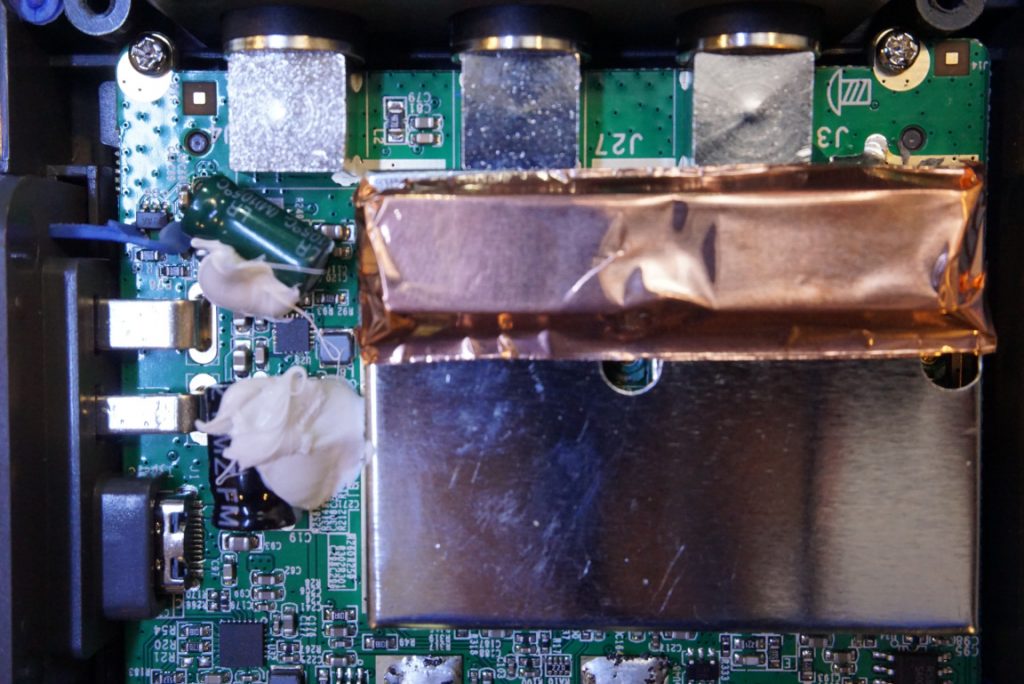
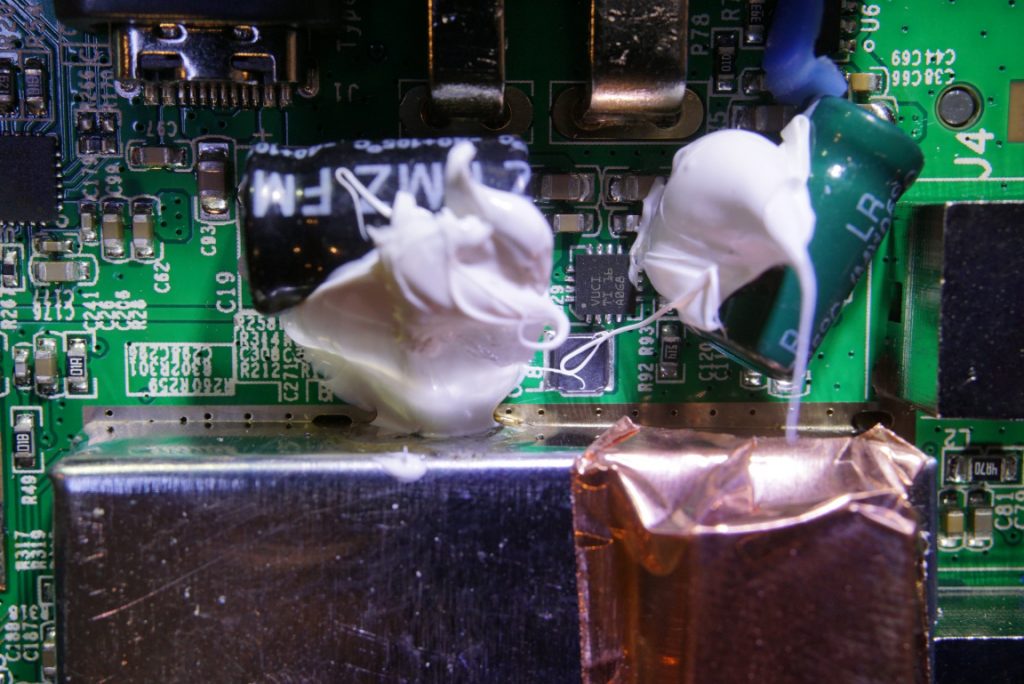
Next to the USB-C port, you see a BQ25616J single cell battery charger chip also from TI. You can also see the programming JTAG header. In the picture to the right below, there are four UMW 1018 long creepage photocouplers that are used to isolate the DMM section from the rest of the circuitry. On the other side of the board, you will see five of additional photocouplers.
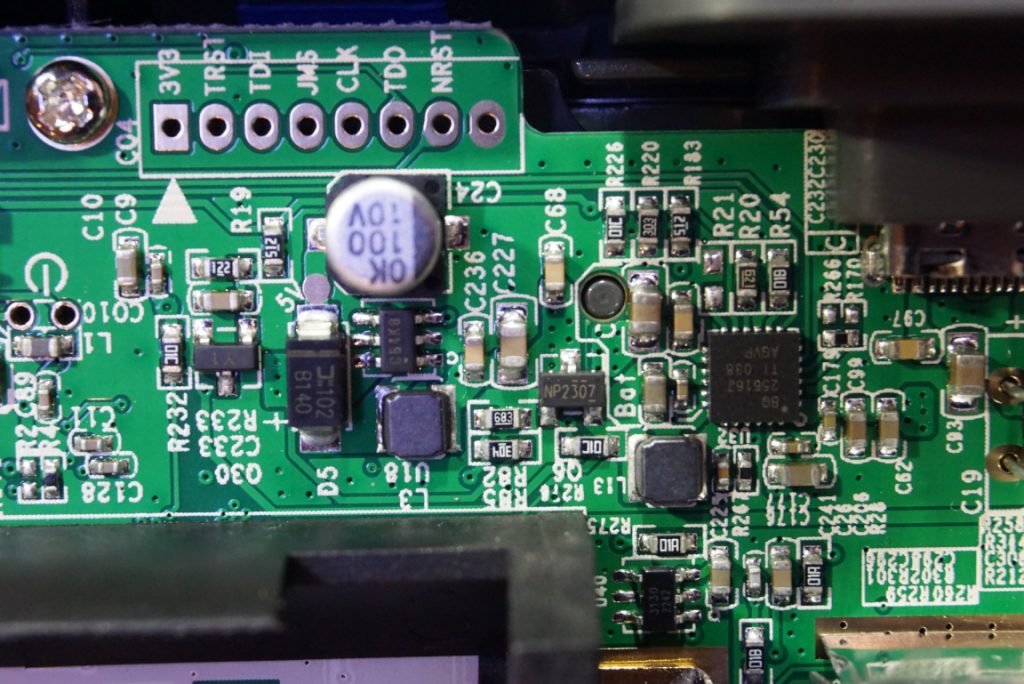
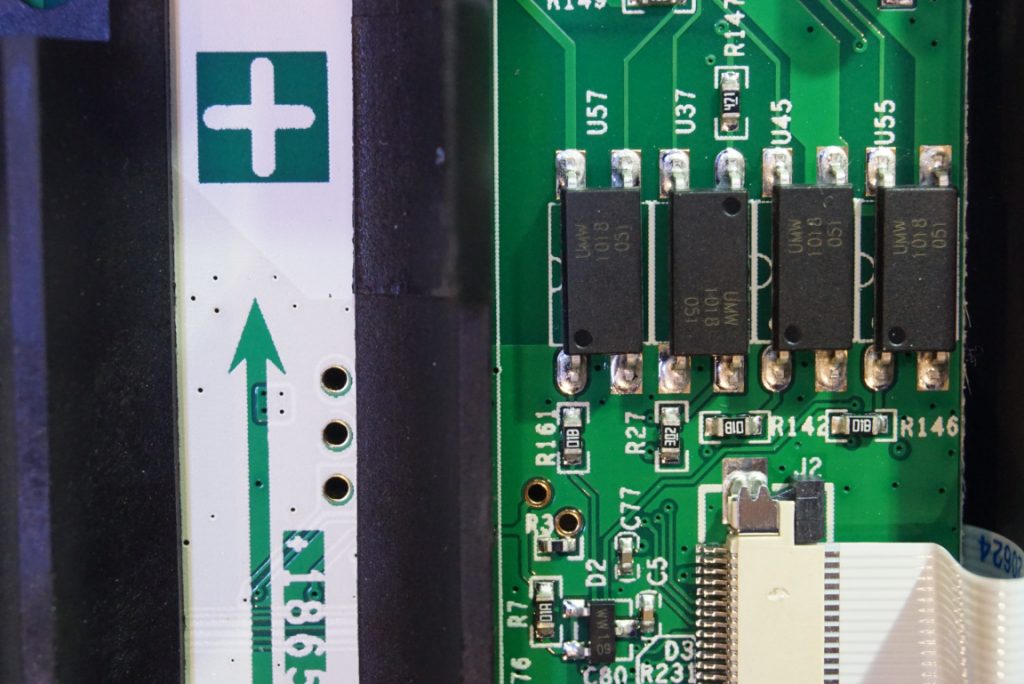
The 8 pin SOIC next to the shielding can for the oscilloscope input section is an RS8412 1.2MHz rail-to-rail output OpAmp.
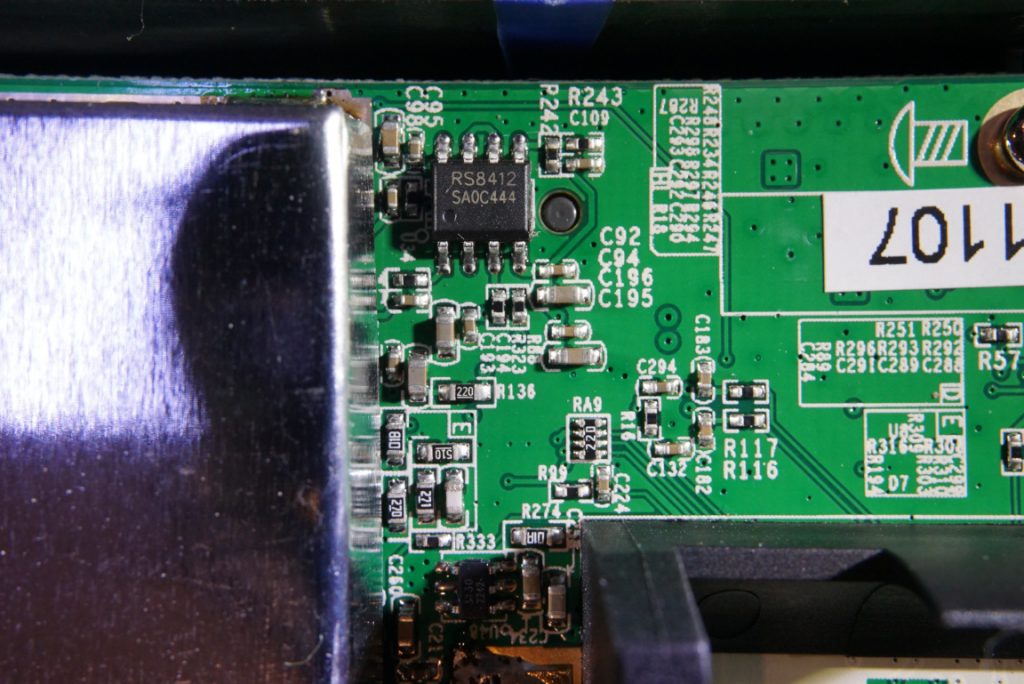
OWON was able to put all the main circuitry onto a single double-sided PCB, this design is a little bit of cleaner compared to that in the Hanek 2D72 as you can see in the comparison pictures below.
In the Hantek 2D72, the USB-C port is not mounted on the main PCB but rather placed on a secondary PCB. In the OWON design, everything except the front panel keypad circuitry is on the main PCB.
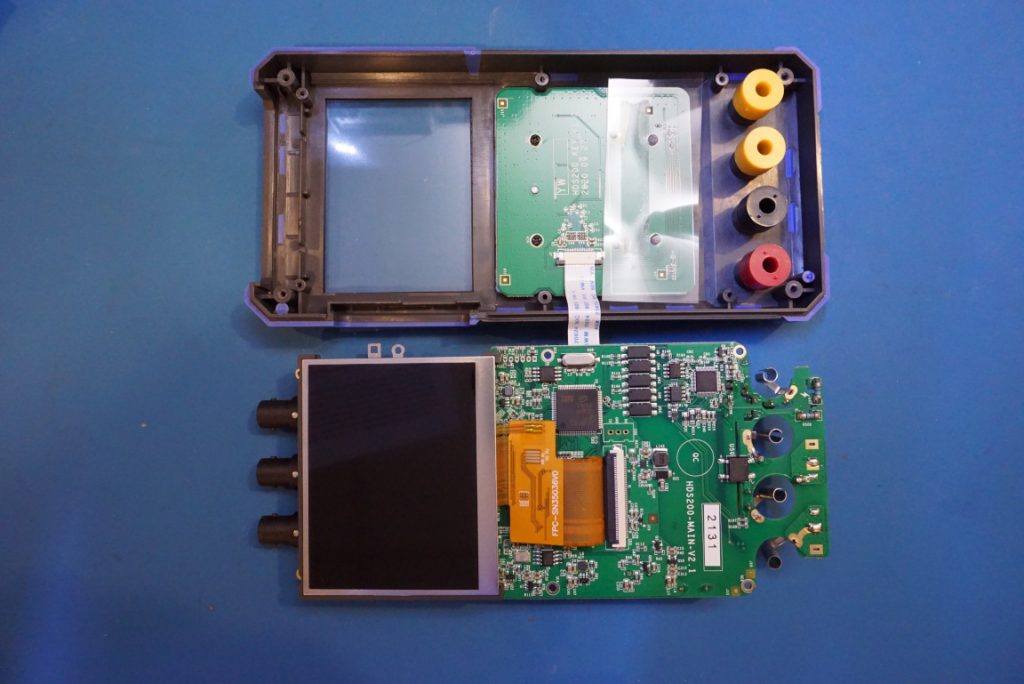
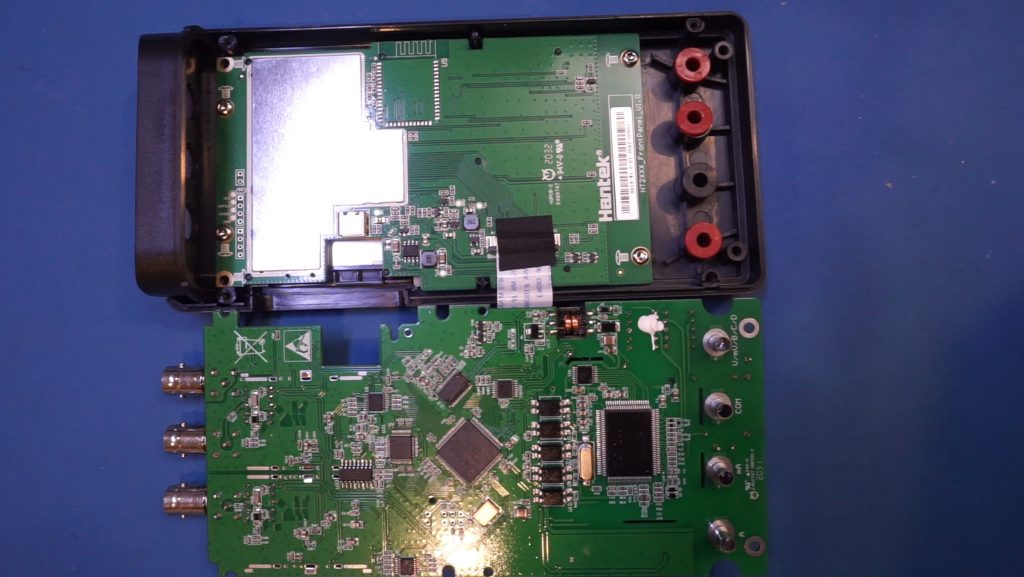
The picture to the left below shows the reverse side of the main circuit board of the OWON HDS272S. From the silkscreen you can see that this board had gone through a few revisions as the current board version is 2.1.
The picture to the right below below highlights the DMM section. Unfortunately, the marking on the DMM chip is sanded off. Nevertheless it is a 20,000 count DMM chip given the specifications (according to EEVBlog forum, this chip is DM1106EN). The 24C08 EEPROM is used for DMM settings/calibration constants as we have seen in many similar DMM implementations. The chip marked 385-12 is an LM385-1.2 1.2v bandgap voltage reference.
The MCU used in this a GigaDevice’s GD32F303 ARM Cortex-M4 microcontroller.
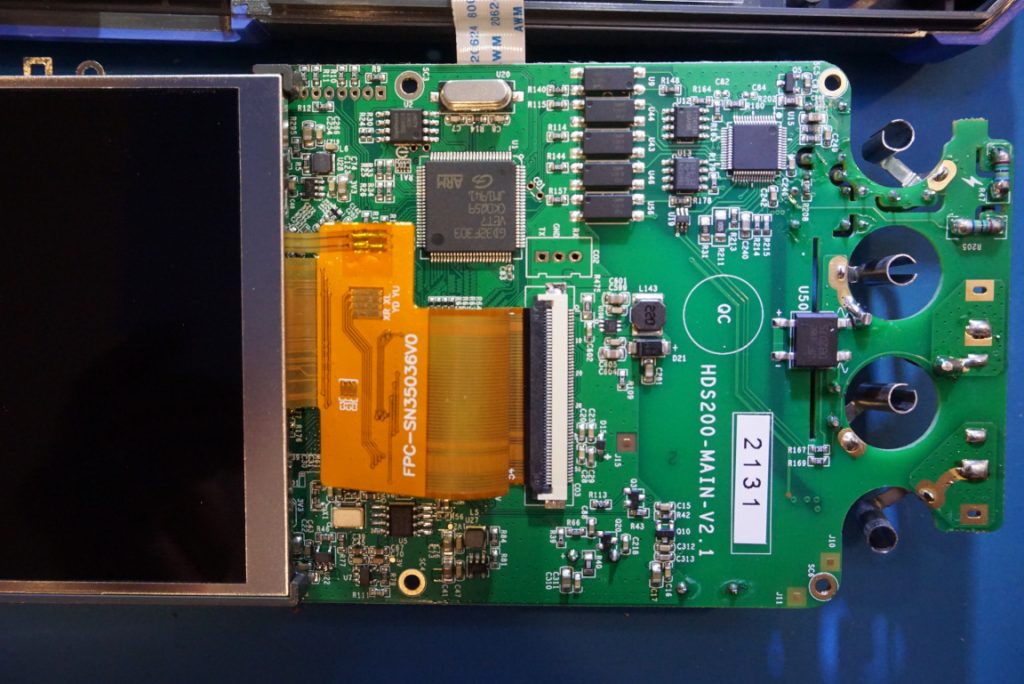
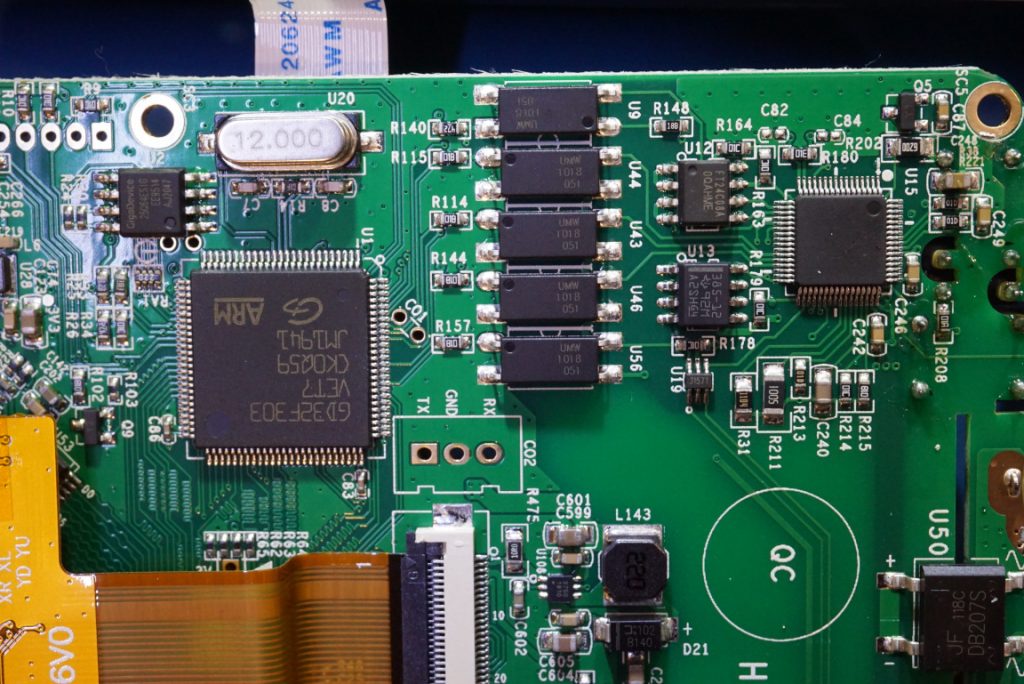
With the LCD flipped to the other side, you can see the FPGA used in this unit. It is an ANLOGIC’s EG4X20BG256. According to the datasheet, it has 19,600 LUTs (lookup table) which is quite beefy.
From the picture to the right below, you can see that the FPGA is responsible for processing the signal from the oscilloscope inputs via the MXT2088 ADC. Interestingly, the MXT2088 is rated as a dual-channel 100MSa/s ADC whereas the input channel digitization rate is specified as 250MSa/s for single channel operation and 125MSa/s for dual channel operations. Presumably this ADC has been overclocked with the design to accommodate the 25% increase in data rate.
Towards the top you can also see the outputting DAC – TI’s DAC904E (14-bit 165 MSPS) for the arbitrary waveform generator, the DAC is also driven by the FPGA as you can see from the traces. There are also a couple of TP2274 general purpose rail-to-rail output OpAmps used here.
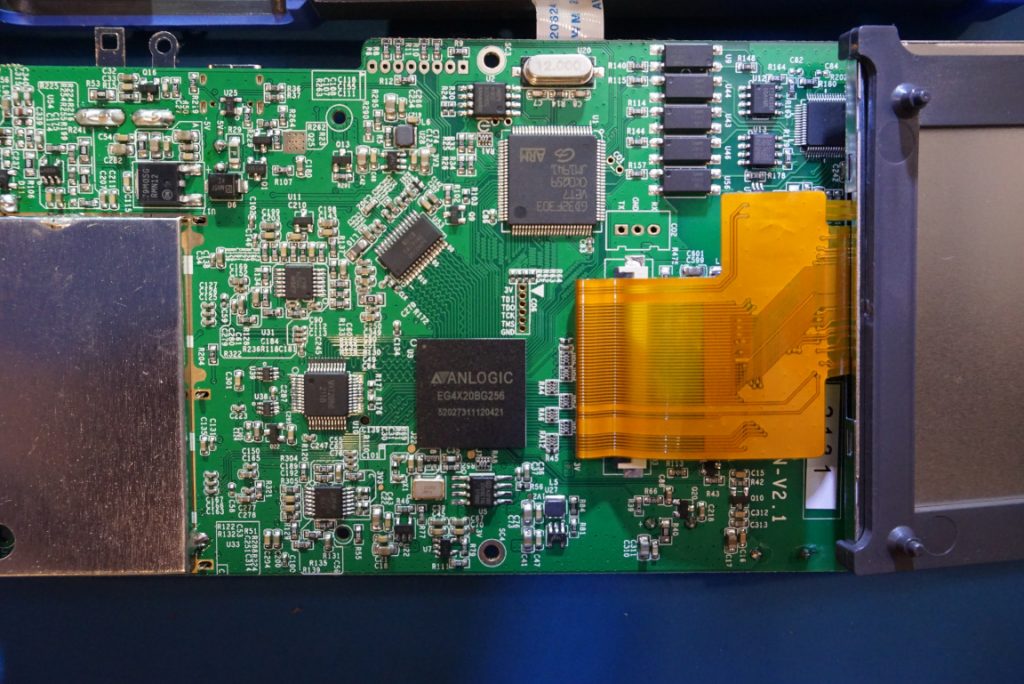
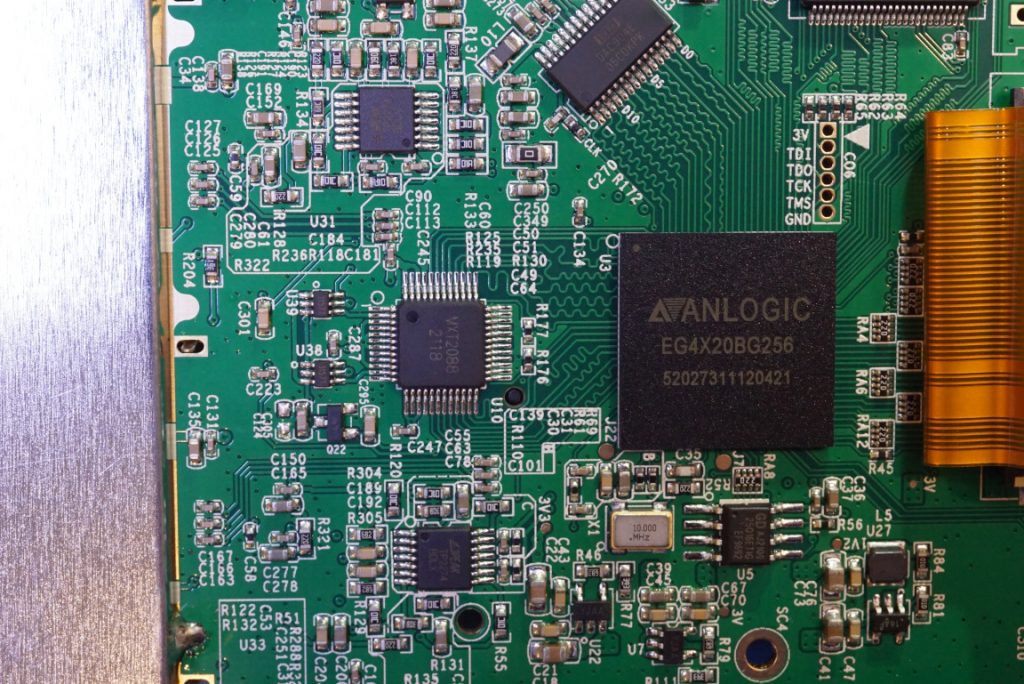
The picture to the left below is a close-up of the ADC/FPGA section. Note the trace length matching on the OWON PCB, this is noticeably absent in the Hantek design which you can see to the right. This could have contributed to the poor stability in the oscilloscope performance as we have seen in the review of the Hantek 2D72.
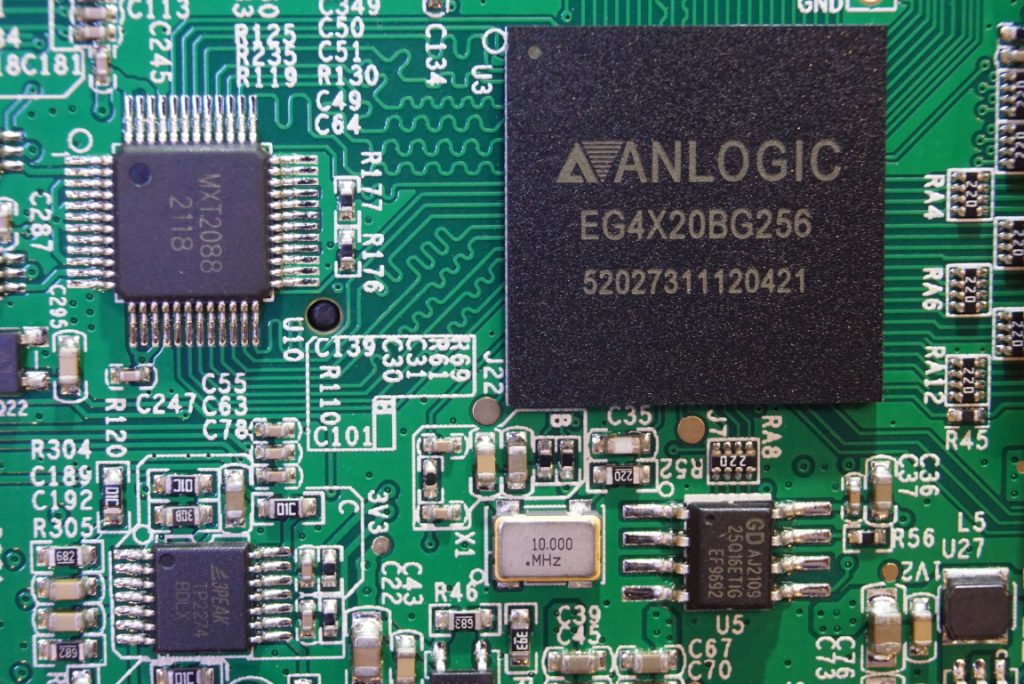
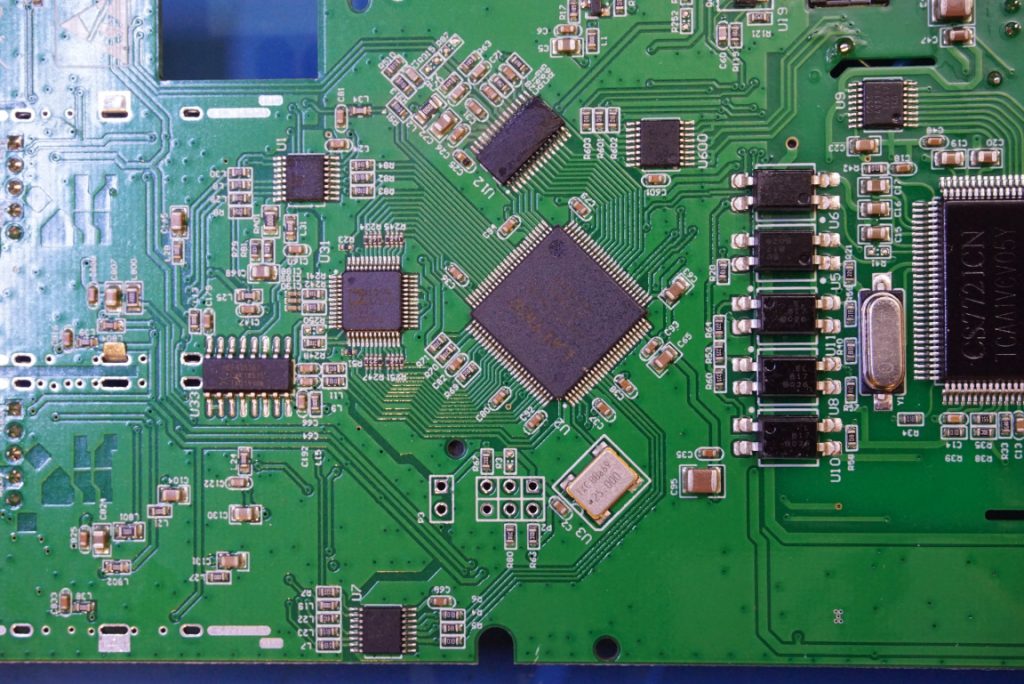
Below is the teardown video of the OWON HDS272S.

